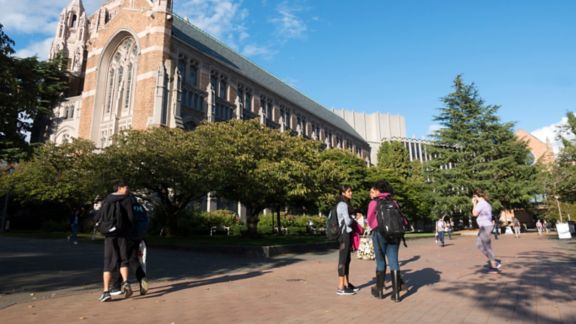New Statistical Approach Helps Understand Faculty Experiences of Academic Freedom

This article is from our NORC Now newsletter. Subscribe today.
June 2025
Researchers used latent class analysis to understand how positional security and influence shape faculty experiences with academic freedom and civil discourse on college campuses.
A groundbreaking new study used an innovative analytical approach to identify groups of faculty members and their different experiences related to both academic freedom and civil discourse at U.S. colleges and universities. The research, a collaboration between NORC at the University of Chicago, the American Association of Colleges and Universities, and the American Association of University Professors, included a survey of over 8,400 faculty members across both two-year and four-year institutions and revealed significant concerns about institutional pressure, exercising academic freedom, faculty censorship, expression of diverse views, restrictions on academic freedom, and legislative contexts.
The study employed latent class analysis—a statistical method that identifies groups within a population based on patterns in their characteristics and survey responses—to examine how different groups of faculty members experience academic freedom and civil discourse at their institutions. This analytical approach revealed three distinct groups of faculty members: those with high, medium, and low levels of “positional security and influence,” which considers factors such as tenure status, institution type, and a variety of demographic characteristics.
“Our team executed latent class analysis to identify hidden groups of faculty members based on demographic and employment characteristics,” said Lisa Davidson, a senior research scientist in NORC’s Education & Child Development department. “It really statistically corroborated what we already know in academia in terms of who the faculty are in these low, medium, and high positional security and influence groups.”
Researchers found that more than half of faculty report administrators are only “somewhat” publicly supportive of academic freedom, while fewer than two in five believe most administrators would support their right to academic freedom if controversy arose.
The study also found that nearly a quarter of faculty report feeling some pressure to conform their political views to align with the views of their administration, and three out of five faculty have refrained from raising politically divisive topics with colleagues.
The survey expanded upon a seminal 1955 study by Paul Lazarsfeld and included 128 items examining political, institutional, interpersonal, and intrapersonal factors affecting faculty experiences. This breadth of questioning allows researchers to examine how systems of power and privilege within academic institutions influence a variety of outcomes, offering a more nuanced understanding of faculty experiences than traditional analytical approaches.
“Our research shows that faculty power and influence aren’t just about tenure—[they are] about how various aspects of identity and position intersect,” Davidson said. “The analytical approach centers systems of power, showing us how these materially influence faculty experiences.”
The analytical approach has potential applications beyond academic freedom research, potentially informing other areas of campus climate research and organizational analysis. The research team hopes their methodological approach will help a variety of higher education stakeholders better understand the complex dynamics affecting faculty experiences and inform decision-making in higher education policy and practice.
This article is from our flagship newsletter, NORC Now. NORC Now keeps you informed of the full breadth of NORC’s work, the questions we help our clients answer, and the issues we help them address.








